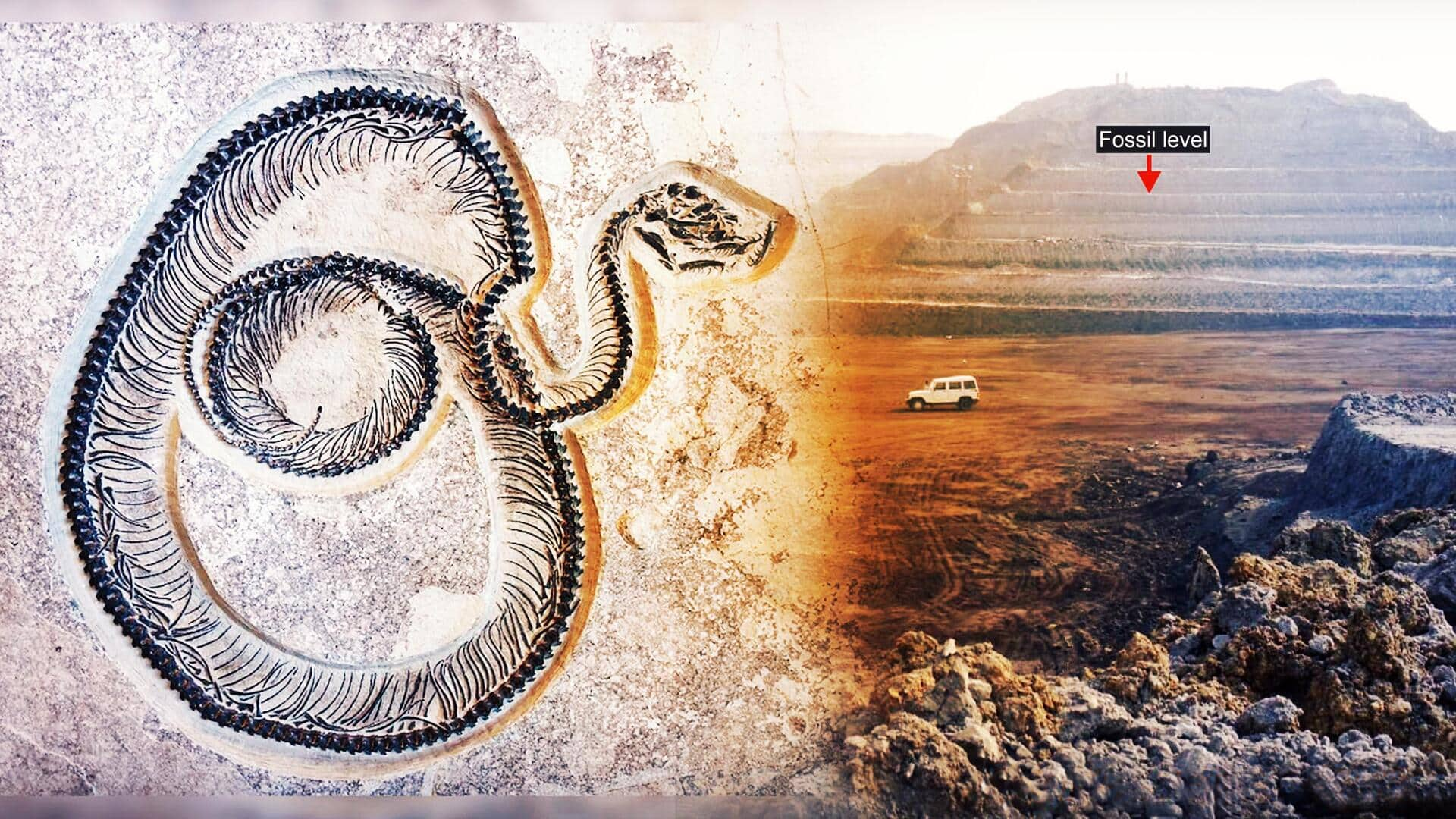
Fossil discovered in Kutch likely belongs to largest-ever living snake
What's the story
A team of researchers from the Indian Institute of Technology (IIT) Roorkee has made a significant discovery in Gujarat's Kutch region. They have unearthed fossils believed to belong to one of the largest snakes ever known. The discovery, made at the Panandhro Lignite Mine, includes 27 "mostly well-preserved" bones that make up the spinal column of the snake, some of which are still connected. The researchers suggest that these vertebrae belonged to a fully-grown snake from the now-extinct Madtsoiidae family.
Species identification
Ancient snake fossil reveals new species
The unearthed snake is estimated to have been between roughly 11-15 meters long. It is thought to belong to the Madtsoiidae family, which was previously known to have existed in India, Africa, and Europe. According to the researchers, this particular species represented a "distinct lineage" originating in India. When the Eocene period occurred, some 34-56 million years ago, this branch traveled from southern Europe to Africa. The unearthed fossils date back approximately 47 million years ago.
Naming convention
Newly discovered snake species named 'Vasuki Indicus'
The snake species has been given the name "Vasuki Indicus" (V. Indicus), both in honor of its finding nation, India, and in allusion to the mythological snake connected to the Hindu God Shiva. The findings have been published in the journal named Scientific Reports. The vertebrae of V. Indicus measure between 38-62 millimeters in length and between 62-111 millimeters in width, showcasing it had a broad, cylindrical body. Researchers estimate that V. Indicus could have been between 10.9-15.2 meters long.
Nature
Study reveals V. Indicus may be a slow-moving ambush predator
Earlier, the team of researchers at IIT Roorkee thought the fossil discovered belong to a giant crocodile. However, they later claimed it to be that of a snake. Not only that, they revealed that it's possible that V. Indicus was a slow-moving ambush predator, similar to contemporary anacondas. They say so based on its mammoth size. India's rich paleontological legacy is emphasized by this find, which also adds a crucial chapter to one's knowledge of ancient life.
Comparison
V. Indicus' size places it in comparison with the Titanoboa
Considering its colossal size, researchers compare V. Indicus to Titanoboa, which was found in modern-day Colombia in the 2000s and was formerly thought to be the longest snake species. According to studies, Titanoboa existed nearly 60 million years ago. The head professor of the geological sciences department at IIT Roorkee, Sunil Bajpai, claims that Python and Titanoboa are the closest cousins of V. Indicus.